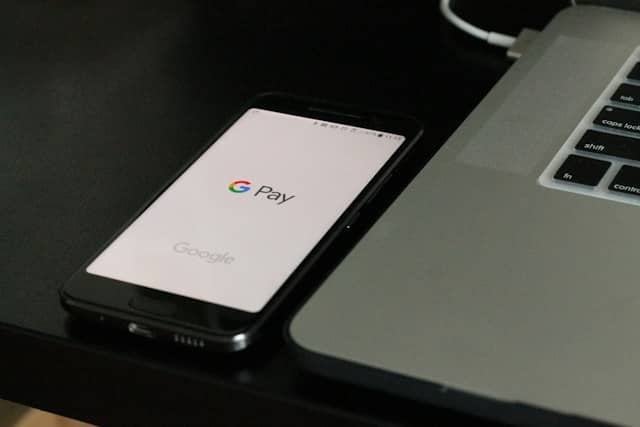As an eCommerce seller, you may have noticed the growing trend of flexible payment solutions and their increasing popularity among shoppers.
You need to understand how different payment options, like Shop Pay, can impact your business and customers’ experience.
Shop Pay and Afterpay are two payment solutions that offer flexible installment plans for online purchases, benefiting both sellers and buyers.
While they may seem similar at first glance, it’s important to dive into the details and understand the differences between these two options, so you can provide the best solutions for your shoppers.
By understanding the workings, benefits, and drawbacks of Shop Pay and its position compared to Afterpay, you can make an informed decision about which payment solution best suits your online store.
This will ultimately lead to a better overall shopping experience for your customers and help your business grow.
Key Takeaways
- Shop Pay offers a user-friendly payment experience with exclusive features for Shopify merchants.
- Understanding the differences between Shop Pay and Afterpay helps sellers make an informed decision on suitable payment options.
- Shop Pay alternatives and a comparative analysis can help sellers identify the ideal flexible payment solution for their store.

What Is Shop Pay?
Shop Pay is an innovative online checkout service developed by Shopify. Its main goal is to provide customers a smooth and efficient shopping experience on Shopify stores.
Thanks to its user-friendly features, it is becoming increasingly popular among eCommerce sellers and buyers alike.
In the eCommerce landscape, Shop Pay plays a significant role by offering an intuitive and straightforward payment solution. It enhances your customers’ overall experience and supports your store’s growth.

How Shop Pay Works
Shop Pay offers an accelerated checkout process by remembering the customer’s email address, shipping address, and payment details.
When a customer uses Shop Pay for the first time, they’ll be asked to provide these details. After that, Shop Pay will automatically apply the information to future purchases, making the checkout process much faster and more convenient.
One of Shop Pay’s best features is its integration with popular payment options like Apple Pay and Google Pay.
This allows customers to choose from various payment methods, increasing the likelihood they’ll complete their purchase.
Additionally, Shop Pay supports buy now, pay later options, similar to Afterpay. This feature lets customers split their payments into smaller installments, making it easier for them to manage their expenses.
Here’s a quick list of the features Shop Pay offers:
- Accelerated checkout with saved email, shipping, and payment details
- Compatibility with Apple Pay, Google Pay, and other payment options
- Buy now, pay later feature for flexible payment management

Integrating Shop Pay into your online store is a breeze. Once you have it set up, your customers will enjoy a seamless and fast checkout experience.
This leads to increased conversion rates and repeat purchases, benefiting both you and your customers.
In summary, Shop Pay is an excellent payment solution that can help you grow your eCommerce business by simplifying the checkout process and offering flexible payment options to your customers.
Shop Pay: Pros and Cons for Sellers
Pros
- Faster checkout process. Shop Pay simplifies checkout, increasing speed and ease of use, which can help to boost conversion rates and encourage repeat purchases.
- Saved payment and shipping information. With Shop Pay, customers’ payment and shipping info is saved for easy future purchases, increasing convenience and saving customers time.
- Fraud protection. Shop Pay uses Stripe’s payment gateway, providing advanced fraud protection tools for merchants.
- Designed for Shopify stores. Shop Pay was created by Shopify, making it a seamless solution for Shopify store owners.
Cons
- Limited to Shopify. Shop Pay is usable only for those using the Shopify platform, making it less appealing for sellers on other eCommerce platforms.
- Competing with Afterpay. Afterpay is available to a wider range of retailers, which means that sellers may have to compete with other stores offering more established BNPL options.
- Smaller user base. While Shop Pay is growing, its user base is still smaller compared to Afterpay’s, which may impact its potential to boost sales significantly.
Shop Pay vs. Afterpay: A Comparative Analysis

Features and Flexibility
Shop Pay offers a seamless checkout experience, saving payment and shipping information for easy future purchases. This increases conversion rates and repeat customers for your store.
On the other hand, Afterpay allows customers to split their payments into four interest-free installments, making purchases more accessible for budget-conscious shoppers.

Fees and Interest
In terms of fees for sellers, Shop Pay charges a payment processing fee based on your Shopify plan, while Afterpay charges a flat fee and a percentage of each transaction.
For customers, Shop Pay is free to use, while Afterpay remains interest-free, as long as payments are made on time.
Availability and Support
Shop Pay is exclusive to Shopify merchants. They provide an extensive help center and dedicated support for their users.
Afterpay can be used with various e-commerce platforms and boasts a wide range of third-party retailers.
Integration with Other Platforms
Shop Pay integrates seamlessly with Shopify stores but lacks compatibility with other e-commerce platforms.
On the flip side, Afterpay offers an API and easy integration with different platforms such as WooCommerce, Magento, and BigCommerce.
User Experience
For customers, Shop Pay provides a simplified checkout, increasing speed and ease of use.
In contrast, Afterpay focuses on breaking payments into installments, making the purchasing process more manageable financially, especially for bigger-ticket items.
Security Measures
Shop Pay employs Stripe’s payment gateway, providing advanced fraud protection tools.
Afterpay also offers robust security measures to protect customers’ payment information and keep transactions secure.
Shop Pay Alternatives
PayPal
PayPal is a widely recognized and trusted online payment platform. It allows your customers to make secure and convenient payments using their PayPal accounts or credit cards.
Offering PayPal as an alternative payment option in your store can increase customer satisfaction and potentially raise conversion rates.
For processing fees, PayPal charges a small percentage of the transaction value plus a fixed fee, depending on your location and the currency used.

Square
Square is another reliable option for online payments. It provides an easy-to-use interface and seamless integration with your e-commerce store.
With Square, you can accept payments through a variety of methods, including credit and debit cards, Apple Pay, and Google Pay.
An additional advantage of using Square is the free point-of-sale app it offers, allowing you to track sales and inventory effectively.
Square takes a percentage of each transaction as a processing fee, which varies based on the type of transaction.
Stripe
Stripe is a powerful and flexible online payment platform designed primarily for developers. With Stripe, you can create a fully customized payment experience for your customers.
It supports multiple payment methods, including credit cards, bank transfers, and mobile wallets.
Stripe’s secure payment gateway helps protect your customers’ sensitive information.
The pricing for Stripe is simple, with a straightforward flat fee for each successful transaction.
Klarna
Klarna is a European-based payment solution popular for its “buy now, pay later” service.
By partnering with Klarna, you can provide your customers the convenience of paying for their purchases over time in installments, without any additional interest or fees.
This payment flexibility could lead to an increase in your average order value and conversion rates.
QuadPay
QuadPay is another “buy now, pay later” alternative, similar to Klarna.
Integrating QuadPay into your e-commerce store allows your customers to split their purchases into four equal payments over six weeks, with no added interest or fees.
QuadPay assumes the credit risk so you get paid upfront and in full.

Frequently Asked Questions
Is There a Credit Check Required for Shop Pay?
No, there is no credit check required for using Shop Pay.
This is because it operates as a buy now, pay later (BNPL) service, allowing customers to make installments without needing a formal credit check.
This makes it easier and quicker for your customers to checkout.
How Does Shop Pay Benefit Sellers?
Shop Pay benefits sellers in several ways.
First, it offers a quick and seamless checkout process, which can lead to higher conversion rates. By storing customer information, Shop Pay reduces the time taken to complete a purchase, thereby decreasing the likelihood of cart abandonment.
Moreover, offering flexible payment options can encourage customers to make larger purchases they might otherwise forego.
Are There Any Interest Charges with Shop Pay?
Shop Pay is designed to be a customer-friendly payment option with no interest or hidden fees, as long as customers make their installment payments on time.
This can make it an attractive payment method for shoppers, potentially increasing sales for your online store.
How Can Sellers Utilize Shop Pay?
To utilize Shop Pay, your online store must be built on the Shopify platform.
Once enabled, Shop Pay will be automatically integrated as a payment option at checkout, allowing customers to choose it as their preferred method of payment.
You can also promote Shop Pay as a BNPL option throughout your store and in marketing materials to attract more customers.
Is Shop Pay a Secure Option for Sellers?
Yes, Shop Pay is a secure option for both sellers and customers. Developed by Shopify, it employs advanced security measures to protect personal and financial data.
As a seller, you can be confident that your customer transactions are handled securely when using Shop Pay. Additionally, customer trust in the Shopify brand and the ease of using Shop Pay can drive more conversions for your online store.
Is Shop Pay like Afterpay?: A Verdict
Both Shop Pay and Afterpay are popular “buy now, pay later” (BNPL) payment solutions designed to increase conversion rates for e-commerce businesses.
However, there are some notable differences between the two that could impact their effectiveness in your store. One main difference lies in their transaction fees and availability.
Shop Pay is reserved for Shopify users, while Afterpay has a broader reach.
In terms of cost, Afterpay charges sellers a commission fee and 30 cents per transaction, while Shop Pay might have different transaction fees based on the payment type.
In conclusion, choosing between Shop Pay and Afterpay depends on your store’s platform, target audience, and desired transaction fees.
Both payment solutions have advantages, so it’s essential to select the one that best aligns with your e-commerce business goals.
Considering sourcing quality products from China and fulfilling orders seamlessly for your store? Feel free to request a quote from us at NicheDropshipping to get started.

